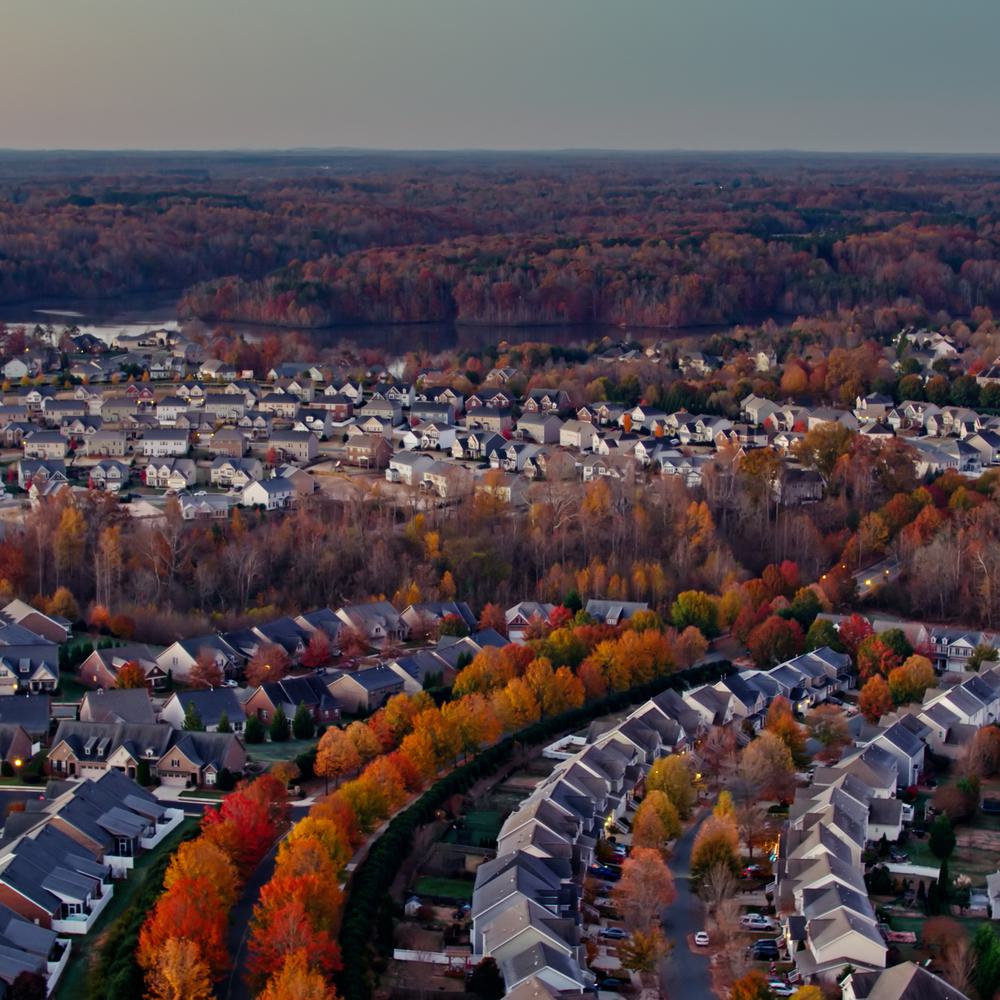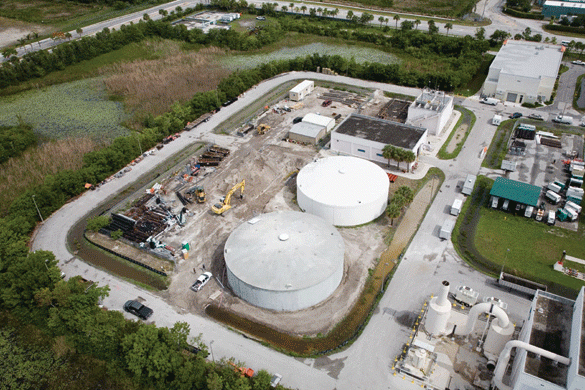Long-Lasting Benefits of Densified Activated Sludge
A recent design of secondary treatment facilities increased treatment capacity while minimizing costs at Gwinnett County Department of Water Resources' Crooked Creek Water Reclamation Facility.
At a Glance
- Since startup, the facility has achieved superior settling with sludge volume indexes (SVIs) averaging 60 mL/g, within the range described as densified activated sludge (DAS).
- Fast-track design simplified construction, so the biological reactor basins were constructed in a single structure, saving time and money.
- Future upgrades may increase the capacity to 20 mgd without building new bioreactors due to densification, which translates to a potential savings of approximately $30 million.

Ron Latimer leads Hazen's Wastewater Process Modeling Group and specializes in biological and chemical process, nutrient removal and recovery, and chemical and energy optimization.
Related Topics:
In 2015, Hazen designed retrofits to Oxidation Ditch 3 (OD3) at the Crooked Creek Water Reclamation Facility (WRF) in Gwinnett County, GA to improve performance and prepare for future plant upgrades. The reconfigured OD3 consisted of an anaerobic zone at the front followed by an extended aerobic zone. These changes, combined with the high proportion of readily biodegradable carbon in the facility’s influent, provided ideal conditions for phosphorus uptake and fostered a strong population of phosphorus-accumulating organisms (PAOs). After the upgrades, Crooked Creek consistently achieved SVIs between 50-80 mL/g, which is in the range described as densified activated sludge (DAS).
Related: Watch how densification helps preserve the vitality of the Chattahoochee River and its surrounding communities.
“The new bioreactors at the Crooked Creek WRF, designed by Ron Latimer and his team, have allowed continuous flow densification in the absence of a physical selector and significantly improved plant performance. This could potentially aid in rerating the facility from 16 to 20 mgd without any additional infrastructure, translating to more than $30M in cost savings.”
Kristopher M. Campbell, P.E., GCDWR Deputy Director – Engineering and Construction
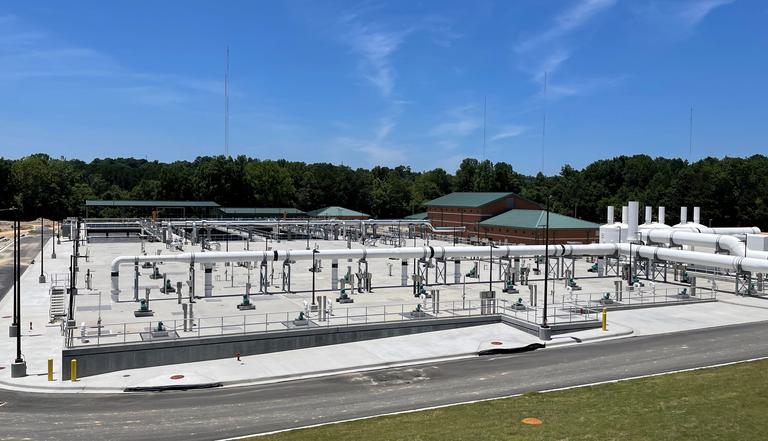
Anaerobic and anoxic zones of the new bioreactor basins.
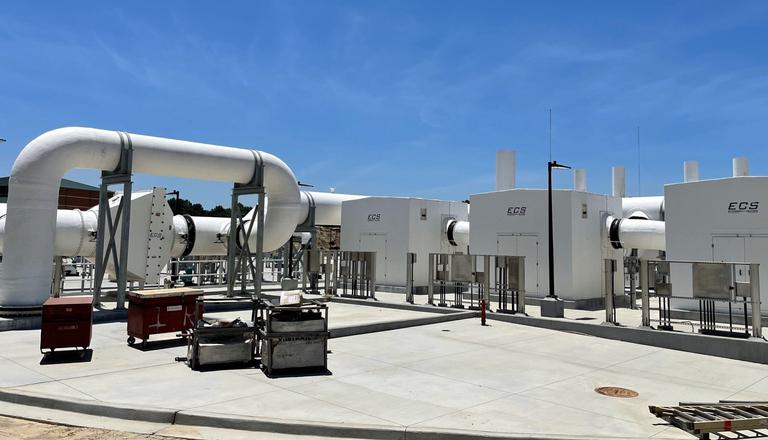
Facility upgrades also included two new activated carbon adsorption systems to treat foul air and provide odor control.
These favorable settling characteristics were then incorporated into the design of secondary treatment upgrades to expand Crooked Creek to 16 mgd-max-month capacity. The upgrades to OD3 offered evidence that a staged anaerobic zone to provide high-food-to-microorganism contact, followed by an extended aerobic zone to create feast-famine conditions, results in excellent settleability. These elements were incorporated into Hazen’s design of the biological reactor basins (BRBs) for the upgraded facility.
The BRBs were designed with a long
anaerobic zone, an anoxic zone, and an oxic (aerobic) zone, or an “A2O”
process. Microscopic analysis and sampling throughout the reactor
revealed a strong PAO population, which provided above-average settling and dense,
compact floc. Excellent SVIs were observed during special sampling
after only five minutes of settling (77-86 mL/g). About 45% of the mixed liquor suspended solids (MLSS) flocs are greater than 212 micron, a threshold meeting the definition of “granules.”
Hazen is designing future upgrades to the facility to increase the capacity up to 20 mgd. These upgrades may be achieved without building new bioreactors due to densification, potentially avoiding approximately 6.3 million gallons of volume.
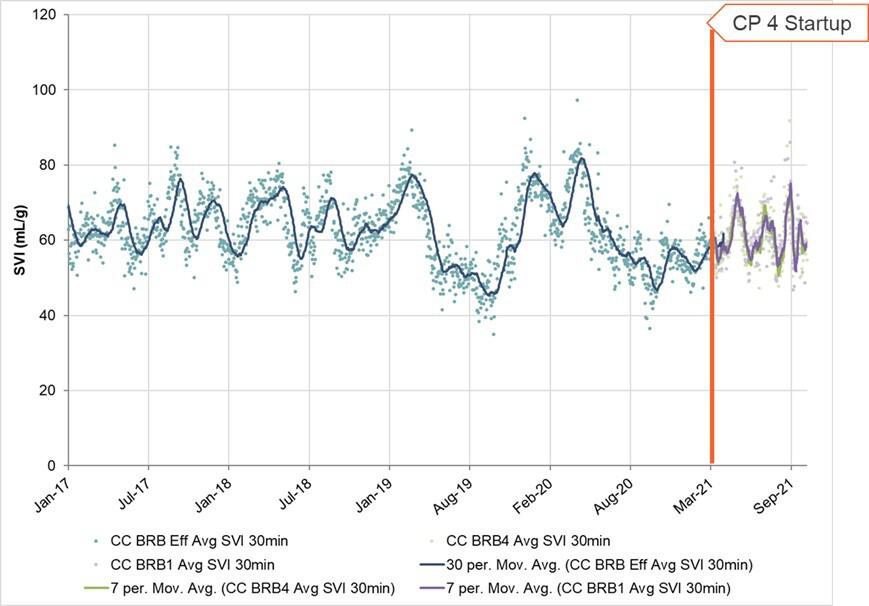
After the upgrades, the Crooked Creek WRF consistently achieved SVIs between 50-80 mL/g, within the range described as Densified Activated Sludge.






